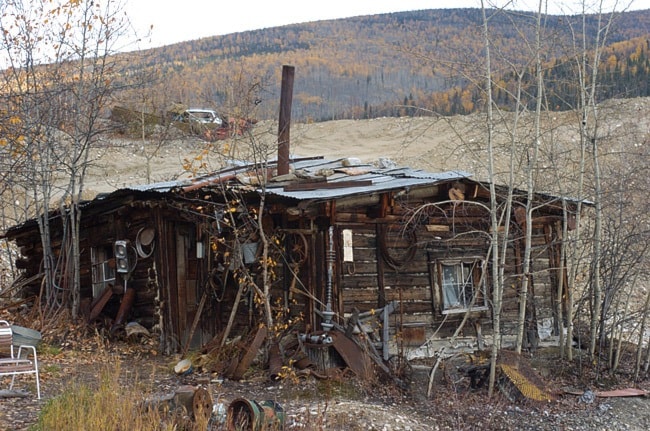The Yukon Conservation Society is raising concerns about a recent policy change that allows owners of buildings on old placer mining claims to apply for ownership of the land.
Lewis Rifkind says it’s not fair to award placer miners title to land that they were only supposed to mine, not own.
“When you stake a claim, you’re staking the right to look for minerals,” he said. “It is not a land grab.”
The change to the rural residential land application policy was made in September 2015 without consultation, and applies to principal residences built on placer mining claims before 1999. The government estimates that there are up to 70 of these structures in the territory.
Before now, these buildings had essentially fallen through the cracks, explained Stephen Mead, director of the land management branch with the Department of Energy, Mines and Resources.
“Up until 1999, a placer miner could build a residence without any type of authorization,” he said. Between 1999 and 2003, land management responsibilities rested with the federal government. But in 2003, that responsibility was transferred to the Yukon government under devolution and a new regulation was passed.
“That new regulation required that any structure, any new structure, had to be authorized for the life of the claim and then removed when the claim expired,” Mead said.
That left the pre-1999 buildings as a “group of orphaned residences,” he said.
Over the years, the government has received various questions about how to deal with the buildings.
“In 2012, the volume of requests and questions related to these historic, legacy structures got to a level where (the government) decided to explore a more general policy solution for these situations,” explained Johanna Smith, manager of land client services, in an email. That led to the recent changes in the fall of 2015.
Under the updated policy, owners of pre-1999 residences on placer claims can apply for tenure if they can prove the building was built before 1999 through dated photos, property taxes, old inspection reports or some other documentation. The current owners don’t have to be the original building owners, but the building must be a principal residence, not just a utility shed or some auxiliary structure.
The buildings do qualify for a number of exemptions, according to the policy. For one thing, they don’t have to meet the requirements of the Building Standards Act because of their age.
They can be within one kilometre of a seasonally maintained road, while new residences must be built within one kilometre of a year-round road.
And they can be located within 1,000 feet of recreational lakes and rivers, which is not permitted for most new buildings.
However, the branch won’t accept applications for buildings within municipal boundaries or on settlement land, Mead explained.
Smith said she doesn’t know how many of the 70 structures identified by the government are principal residences located outside municipal boundaries, meaning it’s hard to know how many are eligible for tenure applications.
But those that aren’t eligible face no immediate threat, she added.
“Right now, they can continue to stay where they are. They can be maintained with their current status ... but they don’t have any future certainty of their tenure or ability to stay there,” she said.
So far, the branch has received two applications from owners of pre-1999 placer claim residences, and has had enquiries from about half a dozen, Smith said. She’s expecting more applications this summer.
“We expect to see more interest once people are back on their claims,” she explained.
But Rifkind is concerned by what he sees as a way of turning temporary claims into permanent property, particularly along waterways.
“Are we now selling off chunks of riverfront property or streamfront property all over the Yukon?” he asked.
“It’s always been under the assumption that when you get a placer claim, you work it and then you move on…. There was never the expectation that this was going to be a permanent thing.”
Rifkind also pointed out that there was no public consultation prior to the policy change. However, Mead said that each individual application will go through a review, including consultation with First Nations on whose traditional territories these residences were built.
Contact Maura Forrest at
maura.forrest@yukon-news.com
